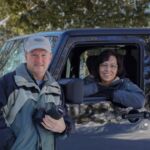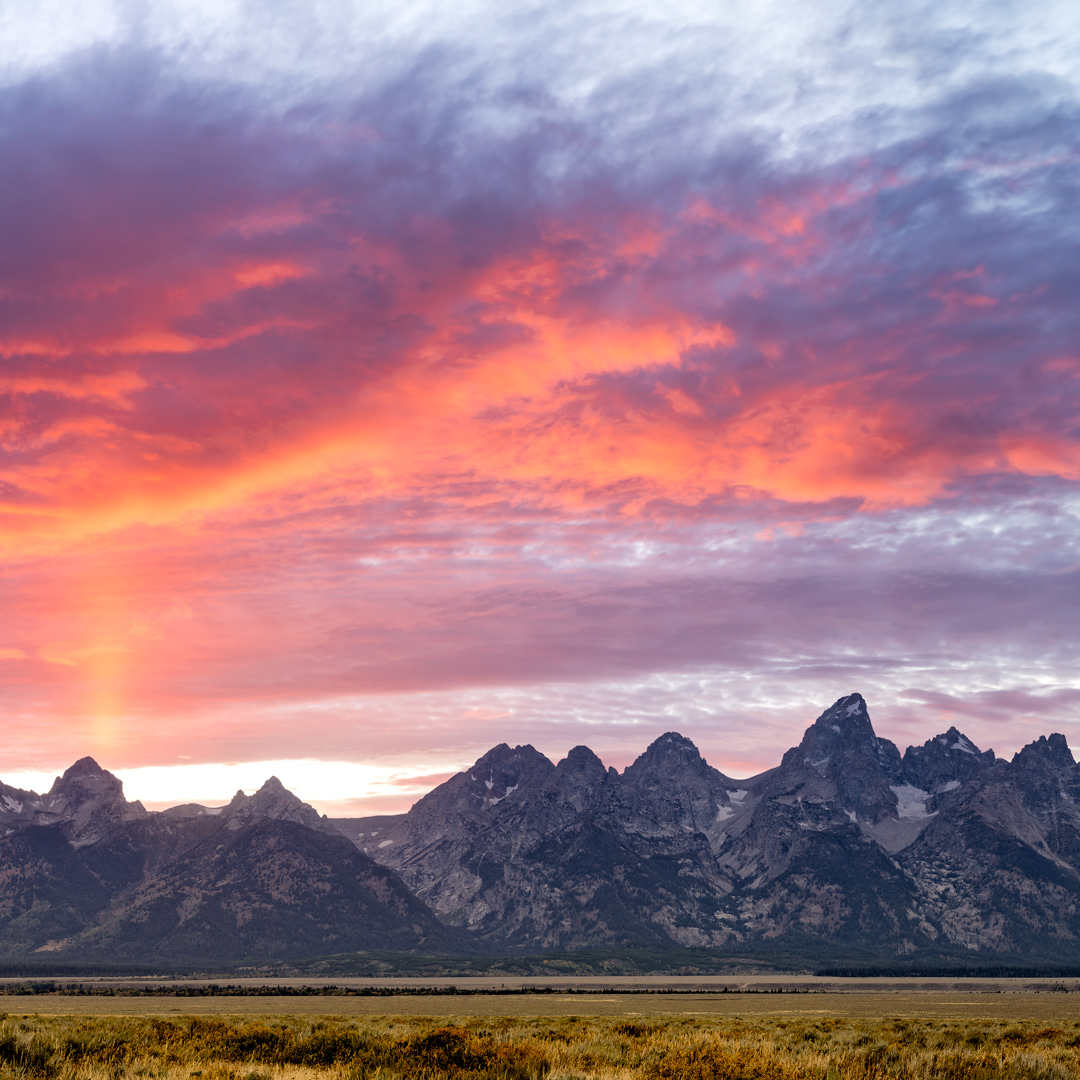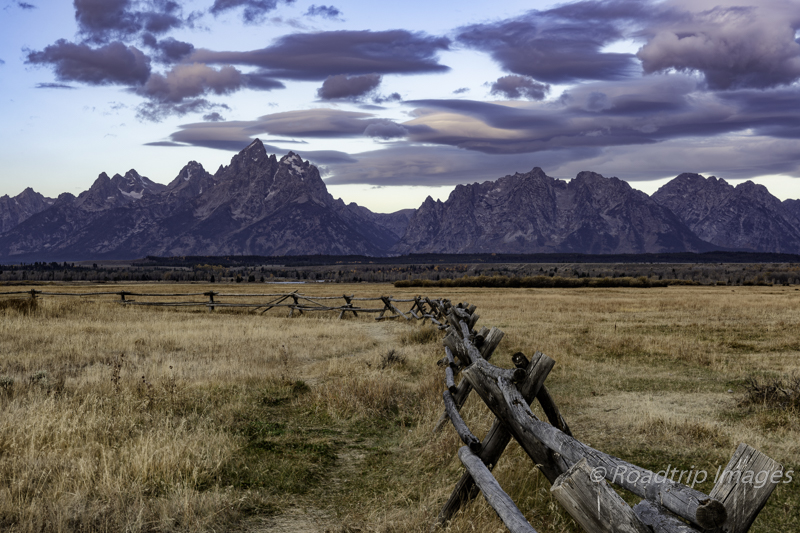Mirror Image Photography - Grand Teton National Park
Getting a nice, clean mirror image photograph requires some special conditions. A smooth lake is an obvious one.
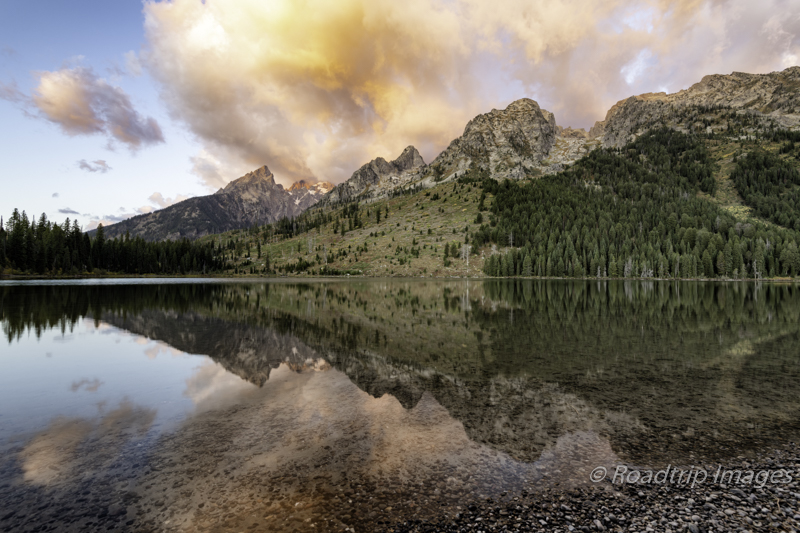
String Lake
String Lake in Grand Teton National Park is a beautiful mountain lake that also tends to make perfect reflections of the Teton Range. Since it’s at the base of the mountains it tends to be sheltered from the winds until later in the day. It’s also pretty shallow with nice stones around the shore so you can see into the water to the submerged stones.
Another nice feature of this little lake is it’s not as heavily visited as some of the other iconic locations in the Tetons. That makes sunrise shoots special as you’re not sharing the view with 25 other photographers. It’s become one of our favorite locations here. Bring your bear spray though as this is bear country.
Making the Photograph
Step one – Get there early. As in before sunrise early. Most of the best light occurs at or before sunrise. It’s also when the winds tend to be calm. You need calm winds to get that perfect reflection. Another important element is a polarizer. I don’t always use one but I always have one with me. It helps to remove the glare off the water so you can see through it to the stones submerged below. In the case of a mirror image reflection however it may ruin the image. Try it and see if it helps or hurts. In the case of this image above I didn’t use one since the reflection came all the way to the shoreline. I wanted to keep the reflection intact.
One of the “rules” of composition would tell you that having the horizon line at the 50:50 point horizontally is a no-no. That’s pretty much true, except for mirror image shots like this. Here it works compositionally so I tend to use it if the reflection is good enough. It’s works especially well in the vertical, or portrait, mode image below. That reflection is very clean and completes the image.
Another technique needed, especially in the portrait mode photo below, is focus stacking. In order to get the small stones on the lake shore in focus as well as the distant mountains requires at least two shots. You might be able to do in a single shot with an f-stop of f/22 or more but probably not. It’s best to make the extra shots in the field just in case you need them later in post processing. You can’t go back and get them later.
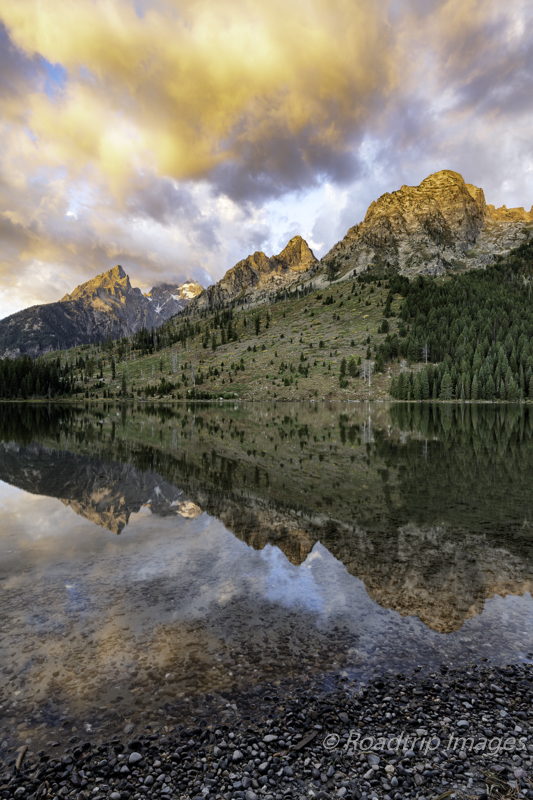
String Lake Rock
There was another composition that we found on the lake after we shot the sunrise reflection shot. It’s the first image below. A group of large boulders caught our eye. We found a pleasing composition with Mt. Moran in the distance. The green hillside along with Mt Moran gave a nice perspective in the lake. I used the 50:50 split horizontally again and also included a bit of shoreline grass to give the image some more depth. This one is also focus stacked to get everything sharp front to back.
The rocks themselves were also interesting along with their own reflections. They reminded us of some similar boulders in the Merced River in Yosemite. That image is the second one below.
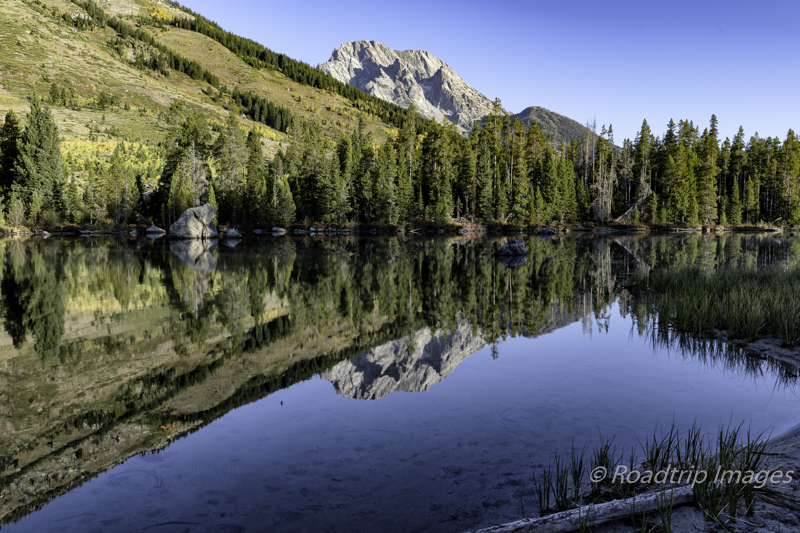
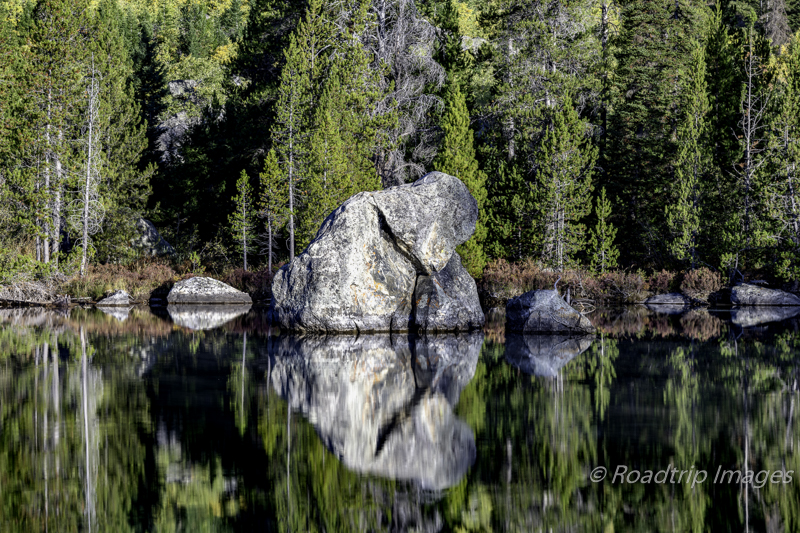
Post Processing
All of the images above require the normal light balancing in Lightroom as well as image enhancements such as dehaze and contrast adjustments. This is normal when you shoot in RAW format. The focus stacking used for several of the images requires a little more effort.
After the basic adjustments in Lightroom, I export the files into Photoshop. In the above cases two frames for each photograph. One as the base image where the focus point is about 1/2 of the way back into the image and the second frame where the focus point is on the close foreground. I only need a small portion of that second frame to blend with the base image to get everything sharp. The second frame is loaded as an additional layer in Photoshop and then masked off with a black mask. Then using the brush tool with white selected, I brush in the near foreground. This allows the near foreground to “show through” the base layer if you will. That’s all I use of the second image. The rest of the base layer is sharp.
Final Thoughts
Mirror image reflections in a very still mountain lake make for some very pleasing photographs. Finding one where you’re the only ones there at sunrise makes for a special morning. It makes getting up and out the door at 5:30 am worth it. If you time it with Fall in the Tetons you’ll also be serenaded by the elk bugling off in the distance as the rut will be in full swing. That makes it extra special.
As always, you can see higher resolution images on our Facebook page. Please give us a like while you’re there.
Nikon D850 with Nikkor 16-35mm at 16mm. f/11 at 0.8 seconds. ISO 64. Other images are similar.
This is our video on mirror image photography
Subscribe and Get Free E-Book!


